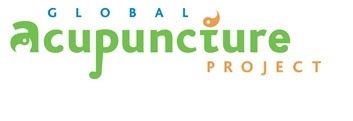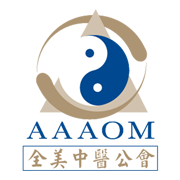American Association of Acupuncture and Oriental Medicine (AAAOM) Position Statement on Trigger Point Dry Needling (TPDN) and Intramuscular Manual Therapy (IMT)
Summary
The American Association of Acupuncture and Oriental Medicine Blue Ribbon Panel on Inter- professional Standards has determined that dry needling and any of its alternate designations, including intramuscular manual therapy, trigger point needling, functional dry needling, intramuscular stimulation or any other method by which a needle is inserted to effect therapeutic change, is, by definition, the practice of acupuncture.
Rationale
- 1. Acupuncture, as a procedure, is the stimulation of anatomical locations on the body, alone and in combination, to treat disease, injury, pain, and dysfunction and to promote health and wellness.
- 2. Acupuncture, as a procedure, includes the invasive stimulation of said locations by the insertion of needles and the non-invasive stimulation of said locations by thermal, electrical, chemical, light, mechanical or other manual therapeutic methods.
- 3. Acupuncture, as a therapeutic intervention and medical practice, is the study of how the various acupuncture procedures are applied in health care.
- 4. Trigger point dry needling, dry needling, functional dry needling, and intramuscular manual therapy, or any other pseudonym describing acupuncture procedures, are, by definition, the practice of acupuncture.
- 5. In the interest of public safety, non-acupuncture boards should not regulate the practice of acupuncture.
The AAAOM endorses the educational standards set forth by the Accreditation Commission of Acupuncture and Oriental Medicine (ACAOM). The ACAOM is the sole agency recognized by the United States Department of Education to set educational standards for the procedure and practice of acupuncture.
The AAAOM endorses the state licensure qualifying standards set forth by the National Certification Commission of Acupuncture and Oriental Medicine (NCCAOM). The NCCAOM is the sole agency recognized by the Institute for Credentialing Excellence’s (ICE) National Commission on Certifying Agencies (NCCA) to qualify acupuncturists for licensure.
State regulatory boards for licensed health care professions other than acupuncture have begun to recognize the procedure and practice of acupuncture by other names, such as “dry needling” and “trigger point dry needling.” At present, this is being done primarily by physical therapy boards in an attempt to expand the scope of practice for the physical therapy profession. Scope of practice expansion attempts made in this manner preclude necessary and adequate educational and safety standards for the procedure and practice of acupuncture. Forty-four (six pending) states plus the District of Columbia have statutorily defined acupuncture and the educational and certification standards required for acupuncture licensure. Current medical literature is consistent with the definitions of both the procedure and practice of acupuncture as provided by state practice acts. 1-21.
Historical Precedents
Trigger point dry needling and intramuscular manual therapy are aliases used in the marketing of a subset of acupuncture techniques described in the field of acupuncture as “ashi point needling.”2 A reasonable English translation of ashi points is “trigger points”, a term used by Dr. Janet Travell in her landmark 1983 book Myofascial Pain Dysfunction: The Trigger Point Manual.3 Dorsher et al.,4 determined that of the 255 trigger points listed by Travell and Simons, 234 (92%) had anatomic correspondence with classical, miscellaneous, or new acupuncture points listed in Deadman et al.,5 an internationally-recognized acupuncture reference book.
Modern authorities agree and describe dry needling as acupuncture.6,7,8 Mark Seem discussed dry needling in A New American Acupuncture in 1993.9 Matt Callison describes dry needling in his Motor Points Index10 as does Whitfield Reaves in The Acupuncture Handbook of Sports Injuries and Pain:A Four Step Approach to Treatment.11 Yun-tao Ma, author of Biomedical Acupuncture
for Sports and Trauma Rehabilitation Dry Needling Techniques, describes dry needling as acupuncture and provides a rich historical explanation of why.12
C. Chan Gunn, “Acupuncture loci: A proposal for their classification according to their relationship to known neural structures," American Journal of Chinese Medicine, 197613 and Peter Baldry, Acupuncture, Trigger Points and Musculoskeletal Pain: A Scientific Approach to Acupuncture for Use by Doctors and Physiotherapists in the Diagnosis and Management of Myofascial Trigger Point Pain, 2005,14 also acknowledge dry needling procedure and practice to be equivalent to acupuncture procedure and practice.
These examples demonstrate a Western medical movement to rename the procedure and practice of acupuncture as dry needling by providers other than acupuncturists. The examples listed above affirm that there is a literary tradition acknowledging the term “dry-needling” to be synonymous with acupuncture.
The U.S. Department of Education recognizes ACAOM as the sole accrediting agency for acupuncture training institutions as well as their Master’s and Doctoral Degree programs.16, 17 Standards of training in acupuncture are well established, and designed to support safe and effective practice.18, 19 Attempts to circumvent acupuncture training standards, licensing or regulatory laws by administratively retitling acupuncture as “dry needling” or any other name is confusing to the public, misleads the public as to therapeutic intervention expected, and, through lack of meaningful education and practice regulation, creates a significant endangerment to public welfare.
This actual risk of endangerment to public welfare has been investigated by at least one malpractice insurance company that has stated it will cancel polices for physical therapists “engaging in a medical procedure for which they have no adequate education or training.”20
Recent actions by state medical regulatory authorities have identified and acted upon the aforementioned risk.21
In conclusion, the AAAOM strongly urges legislators, regulators, advisory boards, advocates of public safety, and medical professional associations to carefully consider the impact of trends in scope of practice expansion issues.
21
1 http://www.ncbi.nlm.nih.gov/pubmed/15108608
2 Janz S, Adams J. Acupuncture by another name: Dry-needling in Australia. Australian Journal of Acupuncture and Chinese Medicine. 2011; 6(2)
3 Travell J, Simons D. Myofascial Pain Dysfunction: The Trigger Point Manual. Philadelphia, PA: Lippincott Willimas & Wilkins; 1983.
4 Dorsher PT. Trigger Points And Acupuncture Points: Anatomic And Clinical Correlations. Medical Acupuncture. 2006;17(3).
5 Deadman P, Al-Khafaji M, Baker K. A Manual of Acupuncture. Kingham, Oxfordshire Journal of Chinese Medicine Publications
6 When To Select Observational Studies as Evidence for Comparative Effectiveness Reviews Prepared for: The Agency for Healthcare Research and Quality (AHRQ) Training Modules for Systematic Reviews Methods Guide www.ahrq.gov Effective Health Care Program. "The AHRQ Training Modules for the Systematic Reviews Methods Guide:..." The AHRQ Training Modules for the Systematic Reviews Methods Guide: An Introduction. Ahrq.gov.
Web. 06 Feb. 2012. <http://www.slideshare.net/AHRQEHCProgram/the-ahrq-training-modules-for-the-systematic- reviews-methods-guide-an-introduction>.
7 Alberta Heritage Foundation for Medical Research Health Technology Assessment Unit. Acupuncture: Evidence from systematic reviews and meta-analyses 2002 Mar.Used in glossary of "Acupuncture for Osteoarthritis." Centers for Medicare & Medicaid Services. Web. 14 Jan. 2012. <http://www.cms.gov/medicare-coverage database/details/technology-assessments-details.aspx?TAId=19>.
8 Acupuncture for Osteoarthritis. Rockville, MD: U.S. Dept. of Health and Human Services, Public Health Service, Agency `for Healthcare Research and Quality, 2003. Print. This definition is also used in the glossary of "Acupuncture for Osteoarthritis." Centers for Medicare & Medicaid Services. "Acupuncture for Osteoarthritis." Centers for Medicare & Medicaid Services. Web. 14 Jan. 2012. <http://www.cms.gov/medicare-coverage- database/details/technology-assessments-details.aspx?TAId=19>1
9 Seem M. A New American Acupuncture: Acupuncture Osteopathy, the Myofascial Release of the Bodymind. Boulder, CO: Blue Poppy Press; 1993.
10 Callison M. Motor Point Index: An Acupuncturist's Guide to Locating and Treating Motor Points San Diego, CA: AcuSport Seminar Series LLC; 2007.
11 Reaves W, Bong C. The Acupuncture Handbook of Sports Injuries & Pain. Boulder, CO: Hidden Needle Press; 2009.
12 Ma, Yun-tao. Biomedical Acupuncture for Sports and Trauma Rehabilitation Dry Needling Techniques. New York: Elsevier; 2010.
13 Gunn, C. Chan. Acupuncture loci: A proposal for their classification according to their relationship to known neural structures. American Journal of Chinese Medicine 4.No. 2 (1976): 183+. Print
14 Baldry, Peter. Acupuncture, Trigger Points and Musculoskeletal Pain: A Scientific Approach to Acupuncture for Use by Doctors and Physiotherapists in the Diagnosis and Management of Myofascial Trigger Point Pain. 3rd ed. Edinburgh: Elsevier/Churchill Livingstone, 2005. Print. ISBN 0 443 06644 2. Preface.
15 Commission on Accreditation in Physical Therapy Education (CAPTE) – Accreditation Handbook – November 2011
16 http://ope.ed.gov/accreditation/
17 http://www.acaom.org/about/
18 http://www.acaom.org/documents/accreditation-manual.pdf
19 http://www.nccaom.org/applicants/eligibility-requirements
20 Letter from Allied Professional Services [on file at AAAOM]




